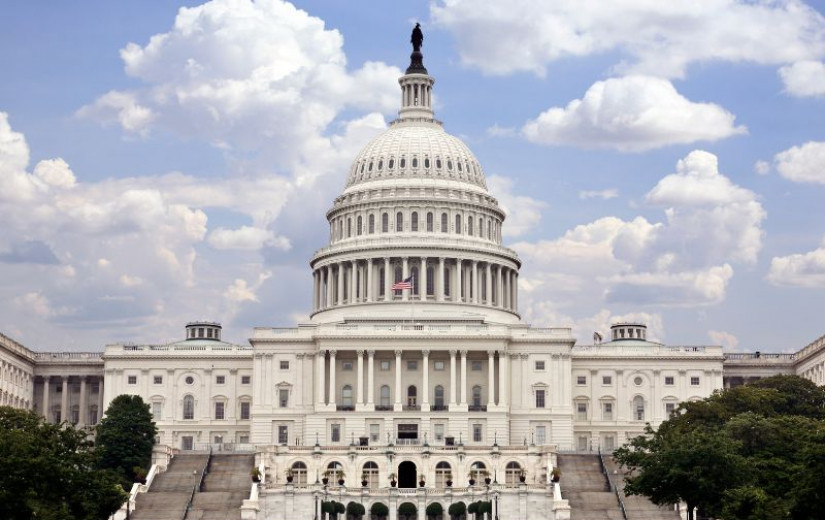
Jan Resseger writes here about the injustice of the budget for public schools passed by the Ohio legislature. Firmly in the control of hard-right Republicans, the legislature eagerly funds vouchers and charter schools while underfunding the public schools. As in every other state, the vast majority of Ohio students attend public schools. The only evaluation of the Ohio voucher program showed that most students who used the vouchers were already attending private schools; those who transferred from public schools fell behind the peers they left behind.
Ohio legislators know that vouchers and charters do not increase educational opportunity. They don’t care. Parents of public school students must inform themselves and act to protect their public schools.
She writes:
In the last week of June, two important events happened almost simultaneously in Ohio: A district court in Columbus found the state’s EdChoice voucher program unconstitutional, and the state legislature passed a budget that at the same time shorts the state’s public schools that serve the mass of our state’s children, significantly cuts the state income tax, and increases funding for private school vouchers over the next two years.
We all desperately hope the Vouchers Hurt Ohio lawsuit will save our public schools, but appeals of the case to higher courts will likely take several years, a period when the new budget’s underfunding of the Fair School Funding Plan, the effect of the income tax cuts and the diversion money to private school vouchers will inevitably continue to diminish the state’s investment in Ohio’s public schools.
In the new budget, the legislature technically phased in a new Fair School Funding Plan—a mathematical formula to ensure that the state will guarantee adequate and equitably distributed state school funding. However, after the House Speaker called the plan unsustainable, the legislature failed fully to fund the new formula’s provisions and thereby ensured the new formula’s ultimate failure before Ohio can even try it out.
The Ohio legislature’s income tax reduction along with lawmakers’ choice to permit continuing growth of publicly funded, universal EdChoice private school tuition vouchers emerges from a philosophy that government’s responsibility is to protect individual parents’ freedom. Solid support for the state’s public schools would instead embody a commitment to what we call the social contract, explained here by economist Joseph Stiglitz:
“A social contract defines the relationship between individuals and societies, much as an actual contract would, outlining the obligations of the parties to the contract and to each other. There is one big difference between the social contract and ordinary contracts. When an actual contract is breached, there are consequences both for the relationship and especially for the breaching party… But when the state violates what it is supposed to do, there is no corresponding mechanism for enforcing the social contract.” The Road to Freedom, p. 86)
Article VI, Section 2 of the Ohio Constitution definesthe state’s responsibility to provide a strong system of public education as part of the social contract: “The General Assembly shall make such provisions, by taxation, or otherwise, as, with the income arising from the school trust fund, will secure a thorough and efficient system of common schools throughout the state; but no religious or other sect, or sects, shall ever have any exclusive right to, or control of, any part of the school funds of this state.”
Here are three ways in which the new state budget undermines Ohio’s public education social contract.
The New Ohio Budget Does Not Commit the State to Equitable and Adequate Public School Funding.
In a new brief, Lawmakers Underfund Ohio Schools by $2.86B in FY26-27; Veto Overrides Risk Another $330M, along with an attached PowerPoint slide presentation, Policy Matters Ohio shows how Ohio’s Fiscal Year 2026-2027 budget undermines the new Fair School Funding Plan just as it is being launched.
The first slide of Policy Matters’ PowerPoint presentation summarizes the impact of the new budget for the state’s public schools: “Ohio lawmakers give a billion-dollar annual tax break to Ohioans earning six figures, underfund (public) schools by $2.86 billion, and leave behind students with the greatest need.”
In Slide 3, Policy Matters compares the amount of public school funding allocated in the new state budget to the amount the new Fair School Funding Plan (FSFP) would have awarded to each school district if the legislature had, as the formula requires it to do, correctly factored in the district’s current costs instead of old cost data from FY 2022. “Under the enacted plan, 74% of Ohio’s school districts will receive less than what the FSFP says they need to meet the costs of an adequate education.”
In a recent Hannah News Service publication, Howard Fleeter, Ohio’s well known school finance expert, explains¹ exactly how the legislature robs school districts of what they had expected under the Fair School Funding Plan: “One of the most important features of the Fair School Funding Plan is its utilization of an inputs-based approach to determining adequacy, which results in a base per-pupil amount which can vary across districts based on the number of students and their distribution across grade levels… In order to not just fully phase in the funding formula but to adequately fund it, the base cost in FY 26 should be based on FY 24 input data and the base cost in FY 27 should be based on FY 25 data.” However, this year the legislature used old, FY 2022 cost data, thereby failing accurately to measure school districts’ costs. In other words, the state should recognize that school district expenses rise year after year due to inflation, and the formula should recognize that school districts have to keep up or risk losing teachers and services.
In Policy Matters’ Slide 5, a bar graph demonstrates that in the new budget, legislators leave farthest behind the school districts serving concentrations of the state’s poorest students. These school districts will fall 107% behind what the FSFP would have brought them in state funding. Their school funding is actually being cut this year.
Part of the loss to school districts serving masses of poor children comes from a recalculation of Disadvantaged Pupil Impact Aid. Slide 7 explains that the legislature used “direct certification, a process of identifying low-income students by relying on public benefits data that will lead to fewer low-income students being counted in the system and fewer DPIA dollars going to the places that desperately need them.” Why has the legislature chosen to base DPIA on a data set that will, “cut more than $200 million in DPIA funds over the next biennium, from FY 2025 levels of support”?
Slide 7 adds, as a preface to Slide 8, that the new budget, “appears use that money to offset the ‘performance’ supplement which is estimated to cost $215 million over the biennium.” What is the Performance Supplement? Slide 8 explains: “The Performance Supplement would rely on (each district’s) state report card data, increasing funding by $13 per student times the number of stars on their state report card or progress report… Report card scores are built on testing performance as well as factors like chronic absenteeism, and the ‘breadth of coursework available in the district.’ ”
Policy Matters Slide 8 clearly identifies the injustice embedded in the Performance Supplement: “Low scores on these indicators should signal to policymakers that the school and the community it serves are devalued, under-resourced, and in need of more help, not less. It explicitly reverses course on closing opportunity and education gaps, which would help schools improve.” In Slide 8, we also learn that the budget adds a $225 per student Enrollment Growth Supplement for the fastest growing suburban school districts. While the supplement will help meet the costs of serving new students moving to these districts, it is important to remember that these are districts serving wealthier families.
In the brief itself, you can link to your own school district’s profile to see how your district fares under the new budget here.
The New Budget Reduces Ohio’s State Income Tax—Undermining the State’s Capacity to Raise Its Share of Public School Funding.
The Plain Dealer‘s Anna Staver explains: “Lawmakers eliminated the state’s top income tax bracket, collapsing Ohio’s tax structure from two rates to one. It’s the last step in a decade-long push for a flat tax —and this final move amounts to a $1.14 billion cut.” Signal Ohio‘s Andrew Tobias adds: “That new top tax rate of 2.75% is lower than any surrounding state and lower than any time in the past five decades… About 96% of the $1.1 billion in annual lost revenue… will stay in the pockets of those earning $138,000 or more….” Policy Matters Ohio’s Slide 10 depicts the legislature’s new flat tax diverting a billion dollars of essential state revenue to wealthy individuals and away from the state’s social contract. The new budget exacerbates a long trend of tax slashing in Ohio. Last fall, Policy Matters Ohio’s Bailey Williams tracked two decades of Ohio tax cuts that have progressively reduced Ohio’s capacity to support the needs of the public and to support the system of common schools promised in the Ohio Constitution.
The New Budget Allows Private School Vouchers to Continue Eating Up School Revenue.
In his June 27th On the Money¹ school funding expert Howard Fleeter describes another primary drain on state revenue: private school tuition vouchers will continue to eat up an increasingly large chunk of the new state budget. Fleeter compares the legislature’s investment in public school funding to the legislature’s investment in private school vouchers. Fleeter calculates, “that state foundation funding for Ohio’s traditional school districts—spread across the state’s 609 local school districts—will increase by $281.9 million over the Fiscal Year 2026-2027 biennium compared to current funding levels.” He continues: “Voucher funding is slated to increase by $327.1 million over the FY26-27 biennium…. This increase is $45 million more than the increase slated for the traditional K-12 districts over the biennium, despite the fact that K-12 districts educate roughly 8 times as many students as do private schools.”
In the New Budget, Legislators Shift the Responsibility for Funding Public Schools More Heavily onto Local School Districts.
We continue to hear a lot from our legislators about the danger of rising property taxes, but ironically, by reducing the state’s investment in public education, the legislature itself has made it necessary for school districts to increase reliance on local property taxes or cut programs and teachers. Howard Fleeter concludes¹ that, in the current fiscal year (FY 2025) under the budget that passed two years ago, the state is paying 38.4% of public school funding in Ohio. In the new budget, in which the legislature has failed to update the cost data in the formula, has cut the state income tax, and has kept on letting an uncapped voucher program grow,“the average state share (of total public school funding) will drop to 35.0% in FY 26 and to 32.2% in FY 27….”
When a state violates the social contract by reneging on its responsibility to fund public schools, the funding burden falls more heavily and more inequitably on local school districts.
¹Howard Fleeter, “On The Money,” Hannah News Service, June 27, 2025, (available free in many public library research collections).









